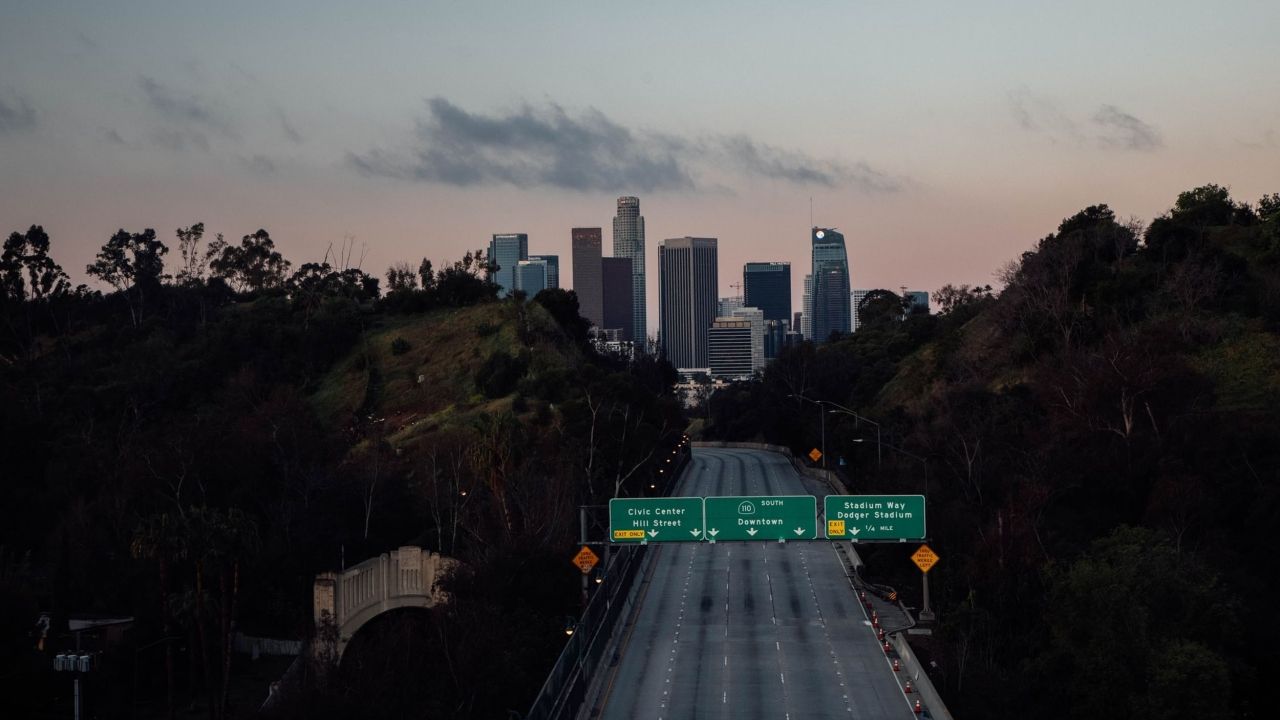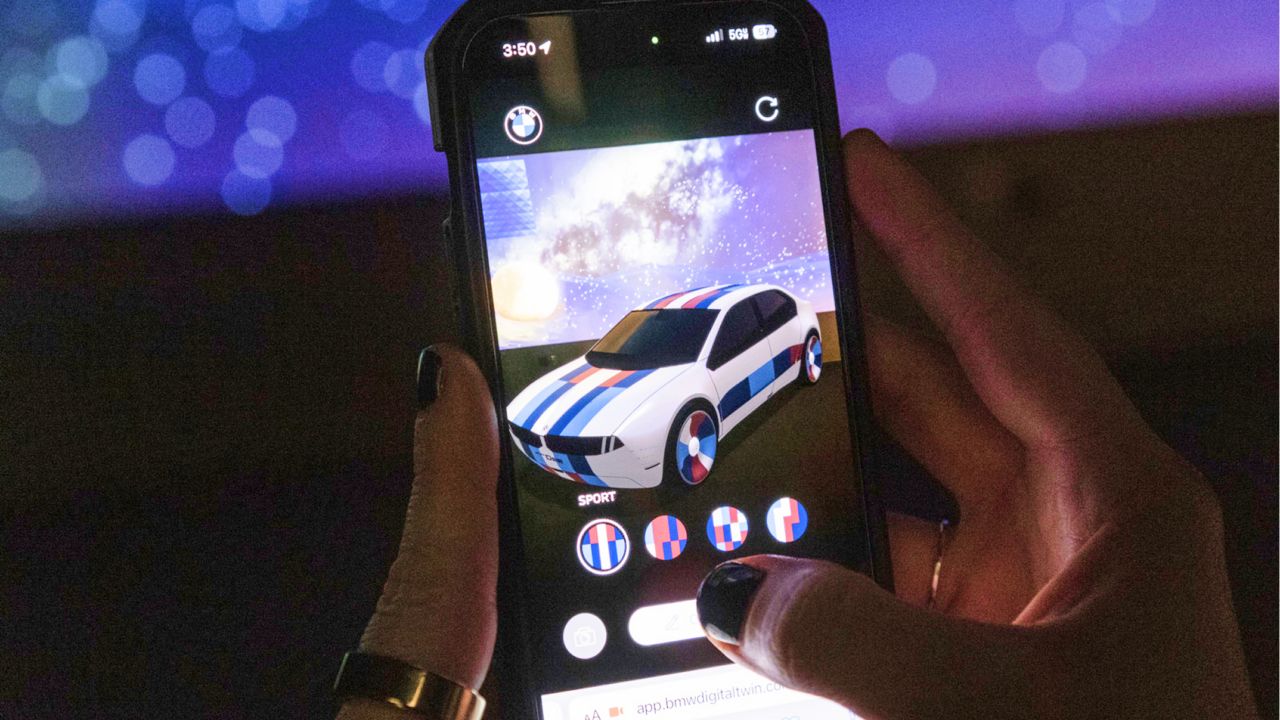Designworks Creative Consultants Reimagine EV Charging Stations as New Spaces for Well-Being
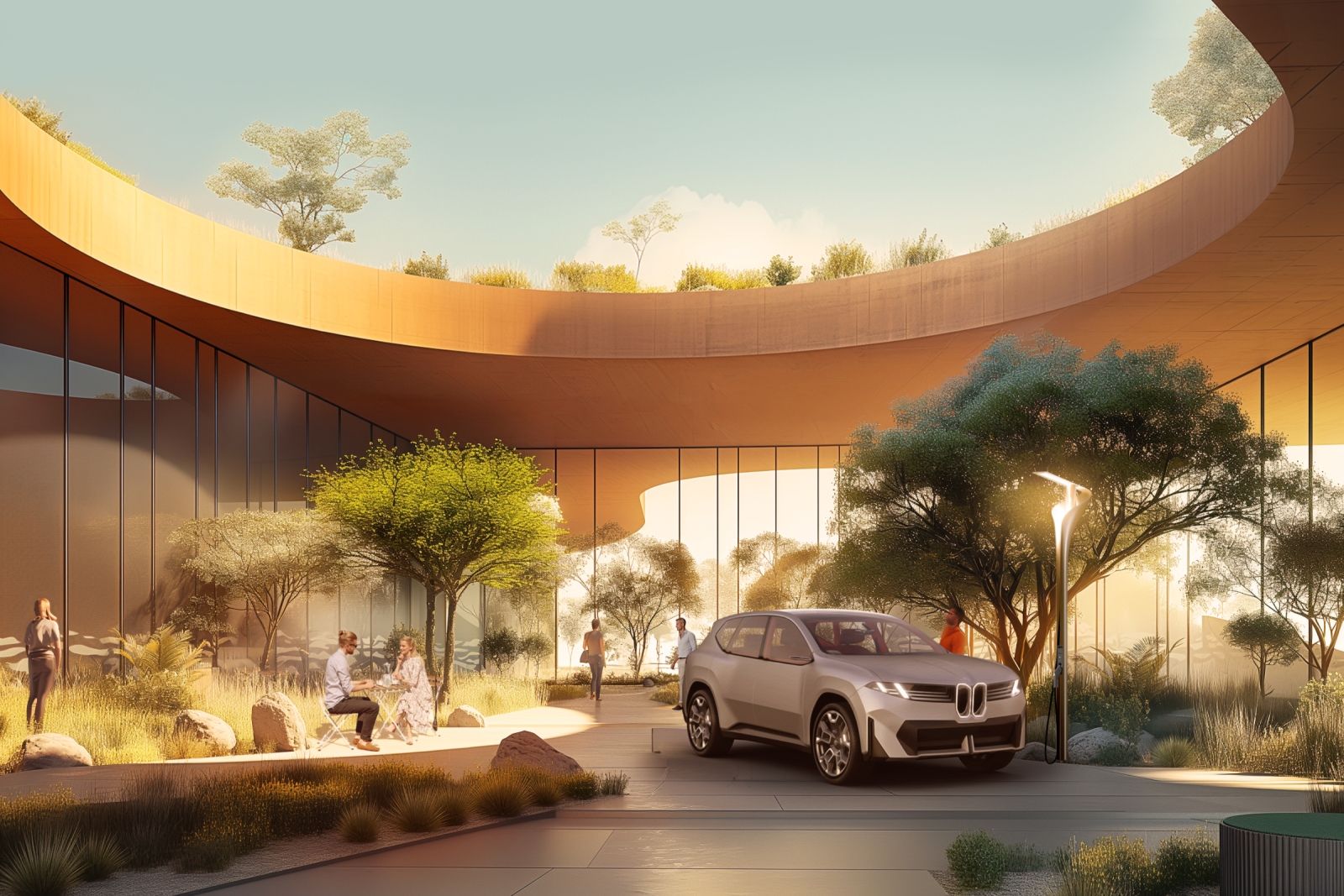
At the nexus of driving culture and wellness, our Santa Monica-based studio is exploring the future of travel, reimagining EV charging stations as “Human Spaces” that restore and rejuvenate EV drivers.
Shifting to a Human First Mindset
Our design ethos places the human at the forefront of electric innovation, and we are advocates for a future where EV charging becomes synonymous with our own wellbeing, becoming more about us and less about our cars.
Embracing human-centric charging spaces is crucial, defining our future of sustainable mobility and wellbeing as gas stations disappear. We believe this transition involves considering a variety of timeframes, creating experiences that benefit us, whether it’s a simple grab-and-go in 5 minutes or a lengthier 20 minutes to charge.
We aim to redefine the charging experience by making wellbeing the primary focus, with charging as a secondary activity. Rather than viewing charging as the main event, we envision a future where our cars charge in the background while we engage in activities that enhance our wellbeing. This shift emphasizes conscious self-improvement over subconscious self-improvement, creating a more holistic approach to our daily routines.
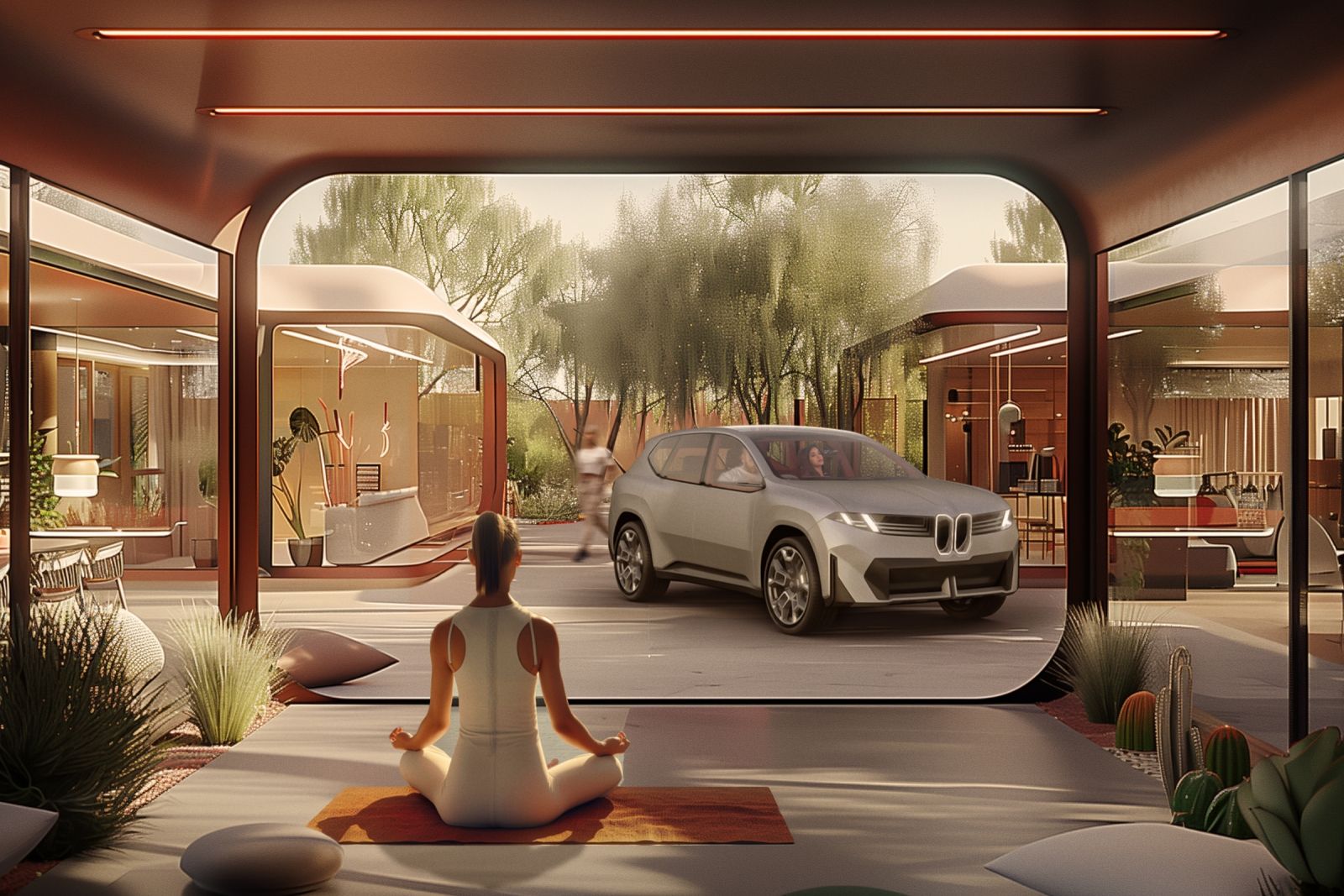
Guilt-Free, and More Intentional Pauses
What if taking a break from our hectic schedules to charge our cars became not just a necessity, but a socially acceptable form of self-care?
As society becomes more aware of the impact of stress on our lives, we’re reimagining everyday experiences to combat it. Whether it’s stepping away from our desks, stretching when we get out of our cars, or simply looking up from our phones, we’re prioritizing moments of pause. The evidence supporting these practices is compelling. Stanford’s School of Medicine discovered that meditation can reduce stress-related symptoms by 30%, potentially preventing serious illnesses. Moreover, neuroimaging studies indicate that meditation can enhance the brain’s neural pathways responsible for concentration and attention, significantly improving our performance. In the context of driving, reduced stress can lead to increased focus and calmness behind the wheel, ultimately saving lives. Monash University’s Accident Research Center found that more mindful drivers are up to 85% less distracted than their less mindful counterparts.
In the near future, we see four opportunities for these spaces:
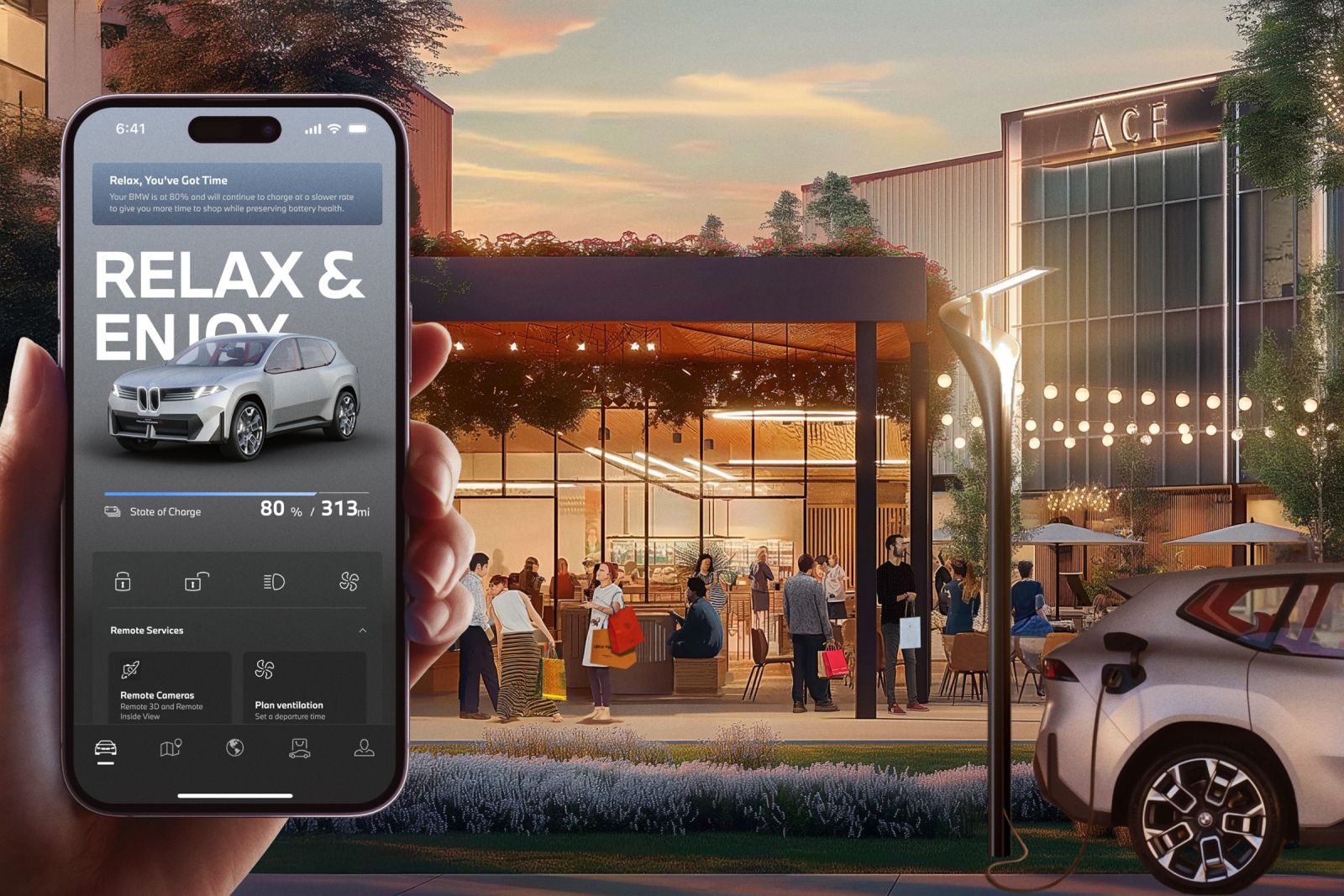
1. Experiential Charging
While it’s common to find slow chargers at shopping centers or near coffee shops, providing a convenient way to pass the time, we envision a more holistic approach. Imagine an experience where the focus is always on us, where charging our cars becomes synonymous with self-care. This could be an experience where your car is intuitively aware of your activity, and can proactively optimize its charging time not only for its own battery health, but for the driver’s needs and desires as well.
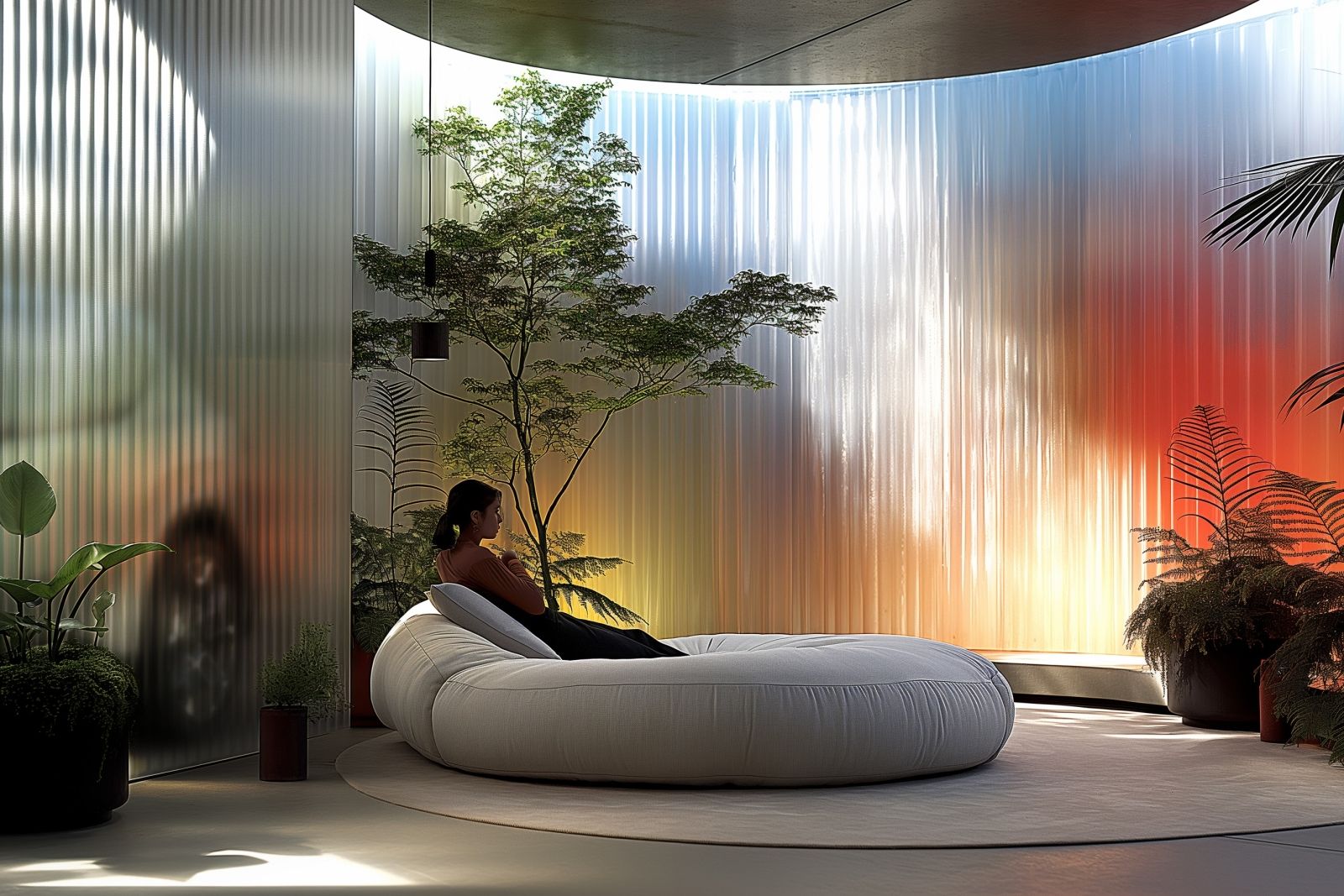
2. Integrated Rejuvination
Spa treatments, meditation gardens, and quiet reading rooms offer havens of peace, allowing EV drivers to escape city noise and focus on well-being during charging sessions. Fitness areas and outdoor spaces invite drivers to take walks and connect with nature, providing an escape from external stressors. These spaces offer opportunities to prioritize well-being, seamlessly integrating self-care into busy schedules.
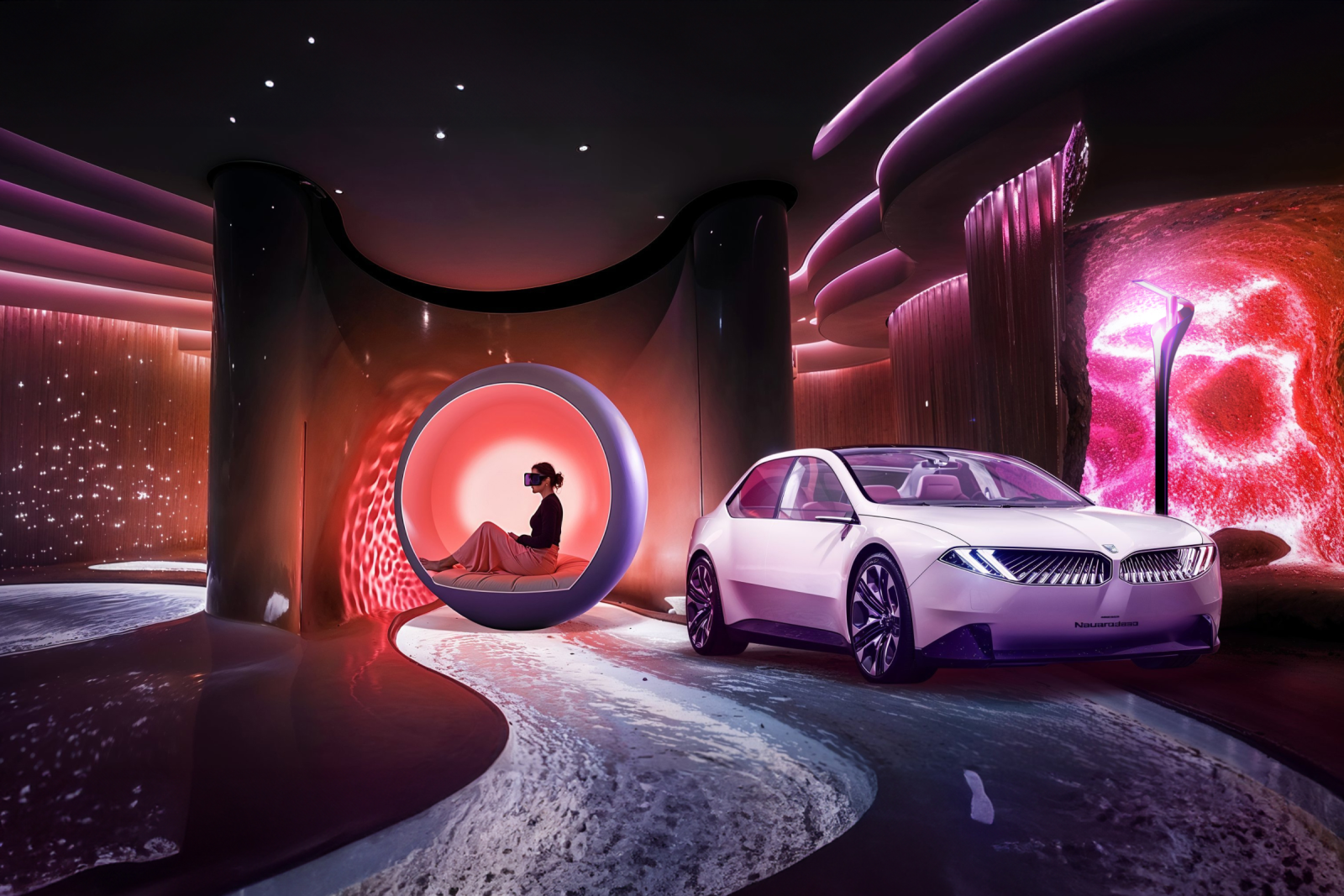
3. A Smartphone Hiatus
Immerse yourself in digital realms for meditation, exploration, or learning, beyond the smartphone. Virtual reality experiences in serene landscapes and plush relaxation pods offer deeply restorative practices. These spaces optimize quality time, offering transformative experiences that inspire and rejuvenate.
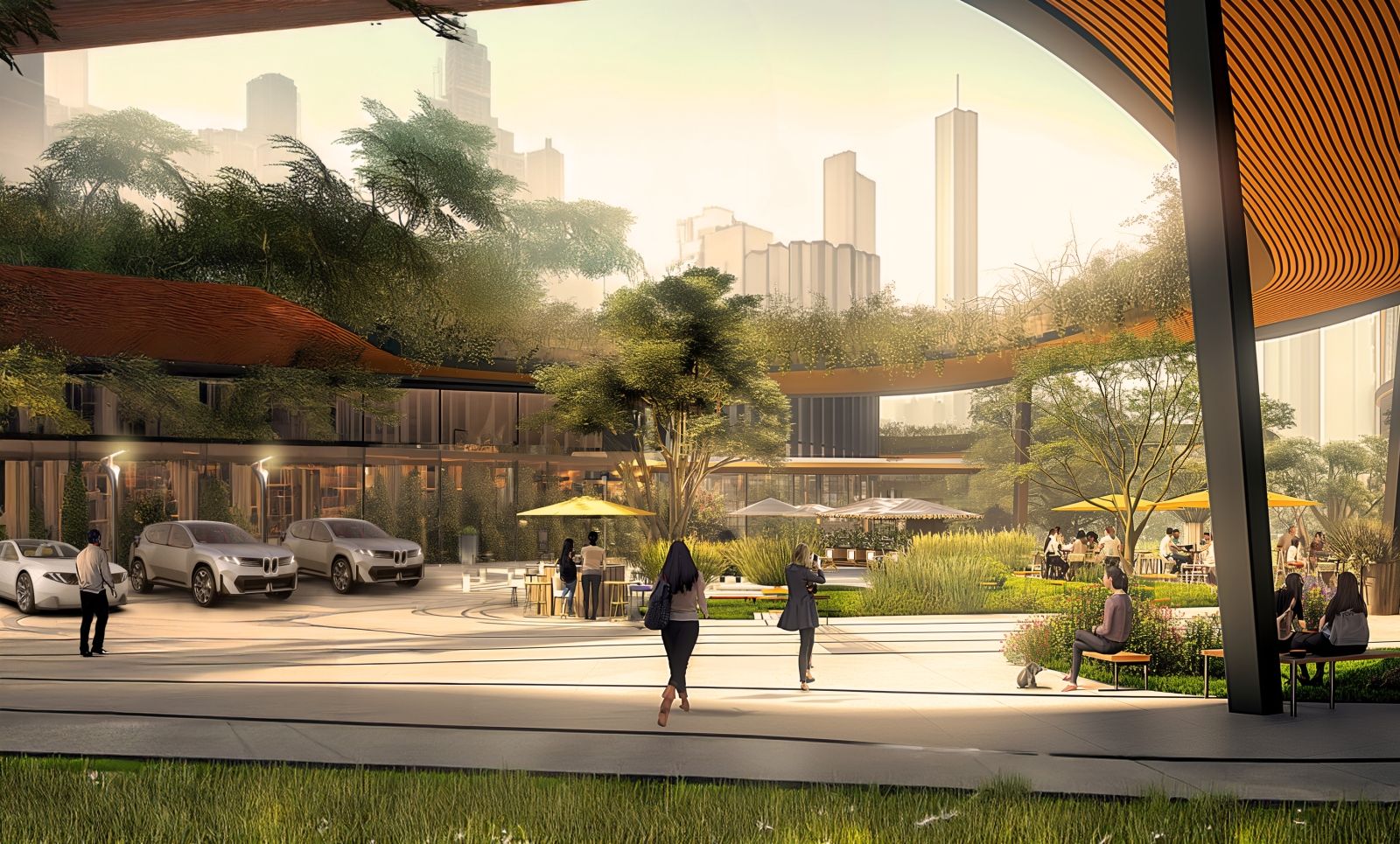
4. The New City Square
Transforming into community hubs, these centers foster social connections among locals, businesses, and tourists. Curated events and experiences, from interactive installations to culinary delights, enliven these hubs. They provide opportunities for engagement and connection beyond individual experiences, enriching urban life.
Moreover, these innovative charging hubs have the potential to become the new city squares or community centers of tomorrow. Imagine spaces where old car batteries are repurposed to power vibrant, multi-functional areas, demonstrating a smart and efficient reuse of resources. This approach not only fosters a deeper connection between people and their environment but also champions sustainability and human-centric design.
In this vision, EV charging becomes a multi-layered experience that prioritizes human well-being, environmental responsibility, and community engagement, ultimately creating a more connected and enriched urban life.
“The city should be an extension of the community. It should not dominate us, but nurture us.”
Today’s EV Reality
At present, California is a leader in the EV revolution (in fact, if it were a country, California would rank 4th in EV sales, following only China, the entire US and Germany). In 2023 EVs accounted for a quarter of vehicle sales in the Golden State. With over 100,000 public or shared private electric vehicle chargers already installed, the state is embarking on a $1.9 billion initiative to expand its charging network. The city of Los Angeles, in particular, is leading the charge, having already installed 29,000 public chargers. By 2028, in anticipation of the LA2028 Olympics, the city plans to increase this number to an impressive 100,000.
From the heart of the EV revolution here in LA, our team of designers is working on everything from designing sustainable mobility solutions for clients such as BMW, John Deere, Alakai and Club Car – to crafting next generation charging products, user experiences and energy solutions, to partnering with industry leaders like Gensler, to reimagine how urban spaces will transform once gas stations become obsolete.
Interested in co-creating a future where sustainable mobility and holistic wellbeing go hand in hand? Contact us!
For media inquiries, connect with our Communications lead, Holly Palmer.

